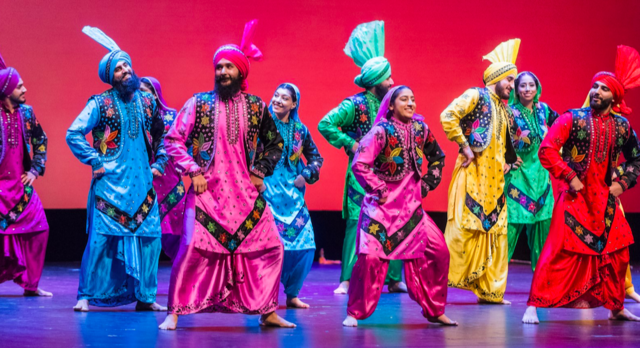CF writes: “I just saw a Facebook quote from a friend that was quoting something from Bhangra. Do you know what this is? When I looked it up on Google, it basically said it was an Asian dance.”
There is nothing New Age or even spiritual about bhangra. It is a folk dance and music style of the Punjab region of northwestern India and northeastern Pakistan that is enjoying increasing popularity even outside the region of its birth.
According to the Encyclopedia Britannica, bhangra was a favored dance by Sikh and Muslim men who lived in the farming districts of the Punjab region of South Asia. It was primarily associated with the spring festival of Baisakhi and draws its name from one of the major products of this region – hemp (bhang).
“In a typical performance, several dancers executed vigorous kicks, leaps, and bends of the body to the accompaniment of short songs called boliyan and, most significantly, to the beat of a dhol (double-headed drum),” the Britannica describes.
“Struck with a heavy beater on one end and with a lighter stick on the other, the dhol imbued the music with a syncopated (accents on the weak beats), swinging rhythmic character that has generally remained the hallmark of any music that has come to bear the bhangra name.”
In the mid-20th century, this dance and music style began to gain popularity outside of the region and became a feature at wedding receptions, birthday parties, county fairs and other celebrations. Little by little, it began to amass an audience that eventually brought it to the UK, in particular, the South Asian London suburb of Southhall.
“In 1979 a Southall group called Alaap released Teri Chunni De Sitare, a forward-looking album that combined the ornamented vocal melodies and metric framework of bhangra with the rhythmic drive and synthesized orchestral interjections of disco dance music,” the Britannica writes.
“Offering a modern musical image with a distinctly South Asian flavour, the album received such an enthusiastic response that it catalyzed a craze for the ‘Southall sound.’ The frenzy was fueled throughout the following decade . . . ”
British bhangra is focused on partying, dancing and having fun, but some musicians such as Apache Indian and Fun-Da-Mental began to use the music as a vehicle for social commentary about major topics of the day such as HIV/AIDS.
There are now two distinct types of bhangra, the Punjabi version and the English version.
I found nothing New Age in either version, nor was there any spiritual meaning associated with the moves. It appears to be used purely for fun in the East and the West.
© All Rights Reserved, Living His Life Abundantly®/Women of Grace® http://www.womenofgrace.com
Send your New Age questions to newage@womenofgrace.com










